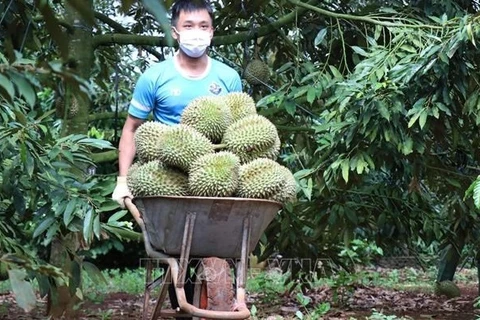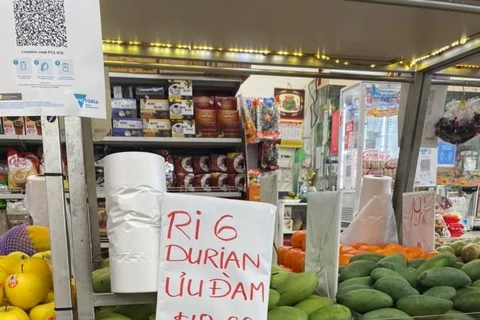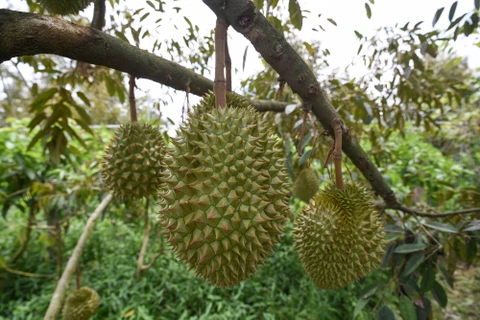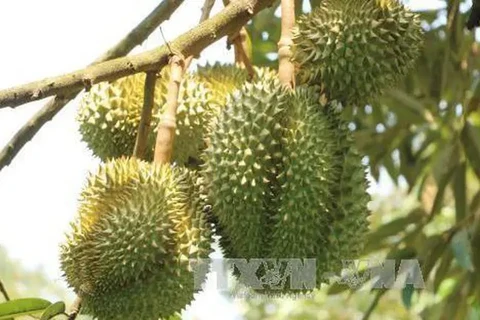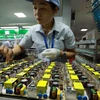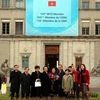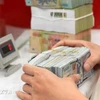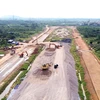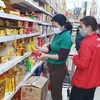 A protocol between Vietnam and China stipulates the management of fruit growing areas, packaging, inspection and quarantine for Vietnamese durian exported to China. Illustrative image (Photo: VNA)
A protocol between Vietnam and China stipulates the management of fruit growing areas, packaging, inspection and quarantine for Vietnamese durian exported to China. Illustrative image (Photo: VNA) Hanoi (VNA) – The first batch of durian exported through the official channel to China was sent from the Central Highlands province of Dak Lak on September 17, more than two months after the Ministry of Agriculture and Rural Development and China’s General Administration of Customs of China signed a protocol on phytosanitary requirements for Vietnamese durian exported to China.
The protocol signing came after four years of negotiation, allowing the official export of Vietnamese durian to China and creating a significant opportunity for Vietnamese farmers to raise the value of the fruit. This, however, is just an initial step.
According to Nguyen Thi Thu Huong, Deputy Director of the Plant Protection Department under the Ministry of Agriculture and Rural Development (MARD), China has announced that 51 planting areas and 25 packaging facilities in Vietnam meet conditions for exporting to China. Nevertheless, those growing areas account for only 3.23% of the total acreage under durian in Vietnam (85,000 hectares).
A majority of the planting areas are in the Central Highlands province of Dak Lak (23), followed by Dong Nai (7), Binh Phuoc (5), and Tien Giang (3). In addition, Ben Tre, Long An, Binh Thuan, Khanh Hoa and Kon Tum each have two, and Dong Thap, Lam Dong and Tay Ninh each have one.
The Mekong Delta province of Tien Giang has the most eligible packaging facilities (10), followed by Dak Lak (4), Ben Tre and Dong Nai (3) and Lam Dong (2). Dong Thap, Khanh Hoa and Hai Duong each have one.
If planting areas in the evaluation process are considered, the ratio increases to about 7%, though this is still a modest proportion.
Among the approved planting areas, 26 are in harvest time (from September to November), with a total output of around 13,000 – 14,000 tonnes a month.
However, not long after the good news about the opening of the door to the Chinese market, a problem arose when some traders faked the origin of durians or mixed fruits from ineligible growing areas with those from eligible ones to ship to China, posing a high risk of losing the market.
“The volume of durian meeting conditions for official export to China accounts for a meagre rate in total output, leading to unhealthy competition and fraud in export,” Huong said.
Director of the Plant Protection Department Hoang Trung said some bad practices had been detected. For example, the Plant Protection Centre for Region 7 found many containers of durian at the border gate with invalid planting area codes.
The official door to the Chinese market has been opened, but whether it will open wider or close will depend on how farmers and agencies work to expand the planting areas and increase the number of packaging facilities meeting requirements.
Minister of Agriculture and Rural Development Le Minh Hoan emphasized the need to re-arrange and standardize the production process to meet the requirements and standards of the export market strictly.
“The standardization of production, from plant variety and farming process to market and farmers’ knowledge, is the responsibility of all of us. We must build transparent agriculture, starting from the story of durian,” he said.
In the time ahead, the MARD requires the Plant Protection Department and plant protection offices in provinces with durian farms and packaging facilities to continue guiding local farmers and packaging facilities in how to complete their dossiers and applications for export to China. At the same time, inspections of planting areas and packaging facilities should be enhanced to ensure they keep up with requirements./.

